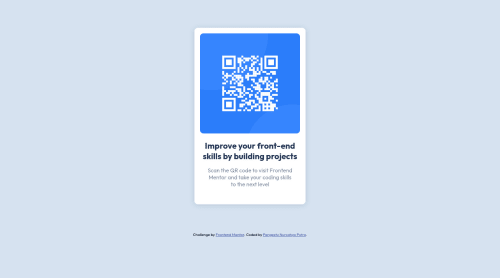QR code component

Solution retrospective
Hi friends, this is my code for QR code componentchallenge. If there are suggestions or additions I am very open to all your suggestions 😊 Thank you.
Please log in to post a comment
Log in with GitHubCommunity feedback
- @vanzasetia
Hi, Pangestu Nurcahyo Putro! 👋
Nice work on this challenge! 🙌 Your solution is responsive and looks great! 👍
You have gotten some wonderful feedback from @PhoenixDev22. I have some suggestions as well.
- I recommend removing the media query. The card element has the same styling whether it's on desktop or mobile.
- I suggest adding
rel="noopener"to any anchor tags that havetarget="_blank". This is a security essential for external links. I recommend reading the web.dev article to learn more about this.
I hope this helps! Keep up the good work! 👍
P.S. I am also from Indonesia by the way. Salam kenal! 👋
- @PhoenixDev22
Hello Pangestu Nurcahyo Putro,
Congratulation on completing this challenge. Your solution looks great. I have some suggestions regarding your solution if you don’t mind:
-
It’s better the attribution lives in the
<footer>landmark. -
The alternate text should be not be
hero img. And it should tells the users where it takes : likeQr code to frontend mentor -
To center the component on the middle of the page you may use the flex/grid properties with
min-height 100vh;to the body. Also you can add a little padding to the body to prevent the card from hitting the screen edges.
Aside these , Good work! Hopefully this feedback helps
-
Join our Discord community
Join thousands of Frontend Mentor community members taking the challenges, sharing resources, helping each other, and chatting about all things front-end!
Join our Discord